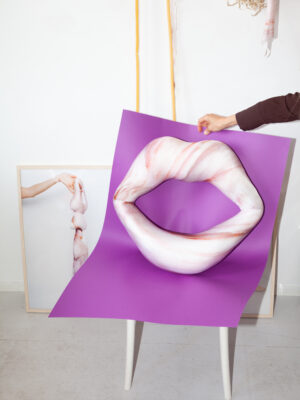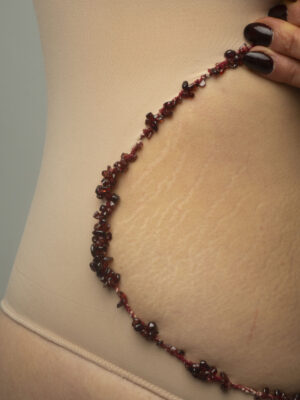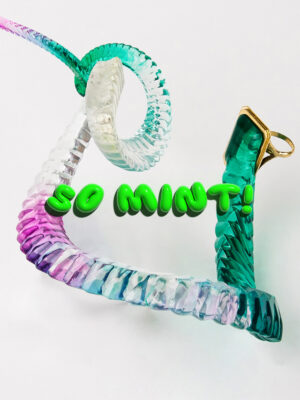CO: How are you? How has this year been for you so far?
Åsa: I guess, to begin with, it was sort of as if the world was in line with my own life all of the sudden. The unsureness of state of things. I had just finished my job at Konstfack. It was ending and I was already in some sort of new place, taking a course at the Royal College of Art and looking for other ways and channels to work. So, for me, it was like a good coincidence let’s say. But of course, it’s been challenging not to be able to meet people physically. And also, I was having this open studio at Fargfabriken for a month and it was just before the Covid-19 outbreak happened and it was really hard to know how to talk about this, it was a really special situation.
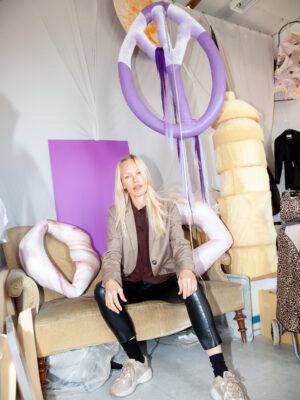
CO: Absolutely. But I guess it kind of corresponds with your work where you’re working with uncertainty, randomness and fictional scenarios and suddenly you find yourself in one.
Åsa: Definitely! Sometimes I think – Do I wish for this uncertainty too much? Maybe… Because when everything else is uncertain, it’s not so easy anymore. So, it works on both levels really.
Me being a material on stage, me being inside of the material, being a director, and a teacher that all helped me a lot. I sort of have all these different roles one can say, but what they all have in common is that I am always a performer somehow.
CO: And you are quite an amazing, interdisciplinary, hands-on everything artist. How did you get to this point in your career?
Åsa: I’ve been trying to explain this to former students when I was teaching. I think it’s a matter of embracing and taking different routes than others. And for myself, I think it has to do with my urge to perform and play some musical instrument or sing, to be on the stage… But it took me many years to dare to do that. So, when I finally dared, I was enrolled in my art education, and on top of that, I started playing music. That made me explore let’s call it the pop industry, the performance art contexts, and also this notion of ‘every fool can play a drum’. Like you just have to go out and do it. A very punk-ish attitude that I have with almost every other medium.
Then also another big change or a big route definer was after my graduation from Konstfack’s fine art department. I applied for a job as a director’s assistant at an advertisement company. Because I really wanted, or had the desire to make money but in a creative business. I didn’t specifically look for the commercial-film-ad business but I wanted to change something from within, from the inside. So, I was exposed to a totally different world and I worked with very different types of budgets and methodology, project management that I learned a lot from. I became a director of commercials for some years and I directed a few music videos.
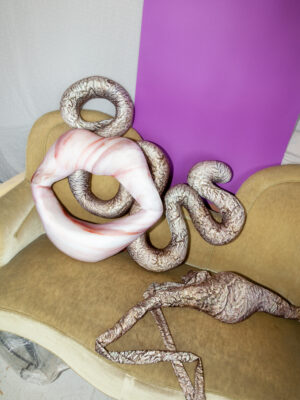
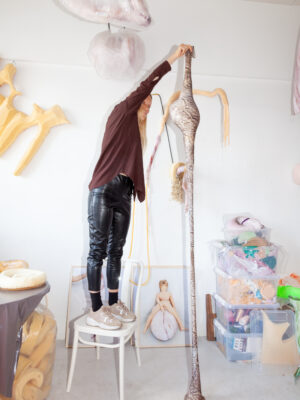
Me being a material on stage, me being inside of the material, being a director, and a teacher that all helped me a lot. I sort of have all these different roles one can say, but what they all have in common is that I am always a performer somehow.
You have to enter a set of rules in a game and then you hold onto that and then you learn from that. And what part of this can I make something out of, can I shift this in a direction that would mean something to me? How to live through compromises?
CO: That’s very true. Then you realise how interconnected everything is anyway and it shows in your body of work which is very complex. It seems like the word material has many meanings in your perception. How do you use the concept of materiality in your work?
Åsa: I actually think of materiality as of a container for a message. It could either be a physical material or it could be a feeling, how I move someone in the scene. That all is material to me. Since I worked at the textile department at Konstfack, we went through this change and we became like the craft department. And for me, that was never an issue to become a craftsperson. I am a craftsperson. It’s just my craft is working with both the visible and invisible materials.
CO: That was actually one of my questions. If this discourse of art versus craft bothers you at all?
Åsa: Well, since I started to work with textile as a material, already in the first year of my studies, I very early on encountered this question of ‘Are you making feminist art? Are you making textile art?’ and I was trying to push that away and say ‘I’m making art and it’s textiles.’ Or I didn’t want to play in a girl band, I wanted to play in the band with girls. It’s not what is most important here. So, these definitions I’ve learned to sort of stay away from, but of course, earlier in life it also made me maybe stand a little more alone. I could have aligned myself with people from textiles, but I felt that I would rather be stubborn.

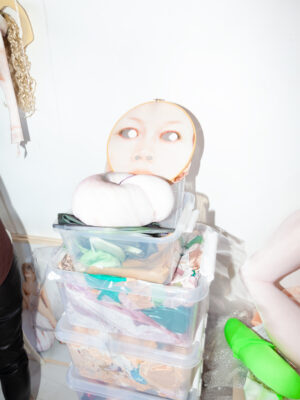
CO: Also, in your work, especially the recent ‘Mama Dada Gaga,’ you are being quite personal which has always been very interesting to me. I guess it takes a lot of courage to share your private life with an audience. Is it difficult or rather natural for you to do that?
Åsa: It’s definitely both. For instance, ‘Mama Dada Gaga’ is specific work. It’s a canon of many of my previous works. It took me 5 years to create this work. No, it wasn’t easy at all. I had to be this way, it’s a way of surviving. Like you have to do tithes way in order to do anything at all. I had to take a very delicate and subtle approach and be responsible for the two loved ones (ed. Note: Åsa’s mother and daughter who are part of the featured film). Am I allowed to expose my daughter to become like an object or my mum? It was a constant negotiation with them. So yes, I had to go through many doubts and ideas and finding solutions for those. But the drive was stronger. The need of expressing this sincerity, the uncertainty that I experience as a superpower, but it’s only a superpower when you allow for it to be present. Society is so rational and square and I want to do everything else than that. How can I show that life is lived through what spills over and not through the definitions that we’ve created?
I obviously talk a lot about playing and playfulness and how playing is very important in a person’s development. And I’ve always been provoked by the fact that we learn so fast how not to play, not follow our instincts, not go for the ‘primitive’ gut feelings. So, for many years, I’ve been looking for ways of talking to this gut feeling and going straight for it instead of packaging it.
Even if I become a mother, that doesn’t mean I stopped being somebody’s child or that I would leave my other roles behind. It’s rather a new possibility that has opened up for me. Women in transition are important because we need to remember that even if the world at large doesn’t expect from a woman to be whoever she wants to be, that’s the fact. You can be whoever you want to be!
CO: I’m also intrigued by this notion of women in transition because it is also something that is recurring in your work. Can you talk a little bit more about that?
Åsa: Yeah, I’m still working with it. I guess it’s the story of my life. Even if I become a mother, that doesn’t mean I stopped being somebody’s child or that I would leave my other roles behind. It’s rather a new possibility that has opened up for me. Women in transition are important because we need to remember that even if the world at large doesn’t expect from a woman to be whoever she wants to be, that’s the fact. You can be whoever you want to be! We must remind ourselves more often than we are allowed to make big plans but also cancelling them and take a different direction instead. It’s okay.
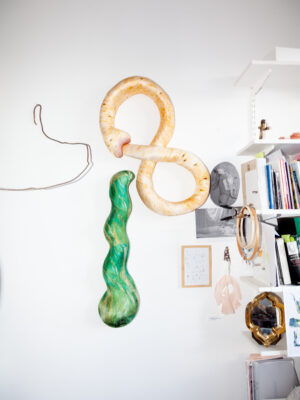
CO: You work digitally as well. It’s an ongoing and undeniable development and I was wondering what role do digital technologies and virtual reality play in your practice?
Åsa: It’s been a desire for many years that I wanted to work with it. I took a class once called trans media and there I got exposed to augmented reality apps and how I could work with layering onto the physical world. I would compare that to playing games as a grown-up. It comes from the playing in the presence that I’m interested in within the virtual realms. How can I claim a presence? How humans can be at many places at the same time? I was thinking if I work with augmented reality, I can at least point to that. But also, it feels like I’ve been just scratching the surface of this…
CO: And what are your plans for the near future?
Åsa: I’m thinking of a new film, I would like to keep working with the virtual tools, but at the same time work physically. I have a big exhibition at Gustavsberg Konsthall next year, so that will be like a conclusion of this year and a step into the future.
This article was produced in connection with Stockholm Craft Week 1-4 October 2020
